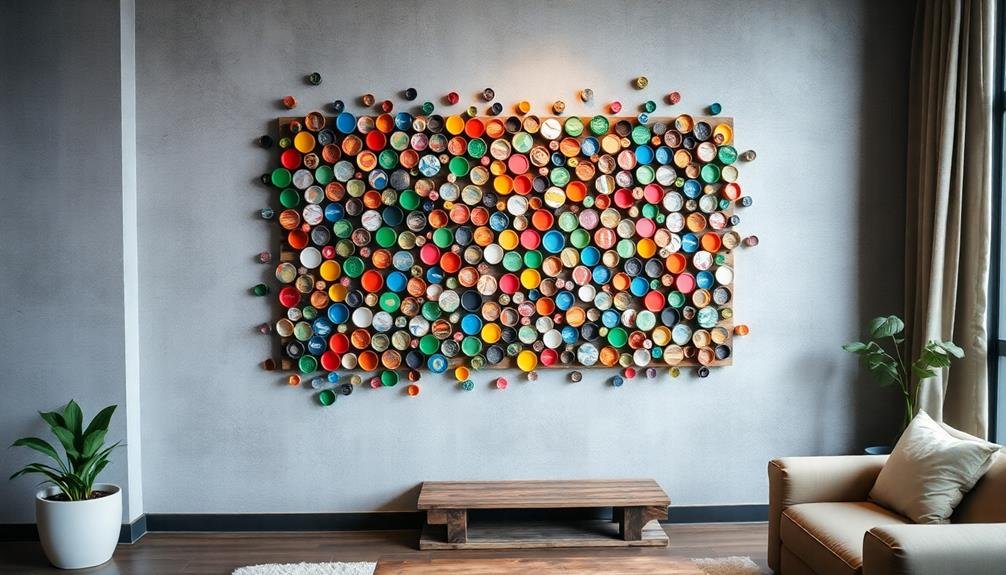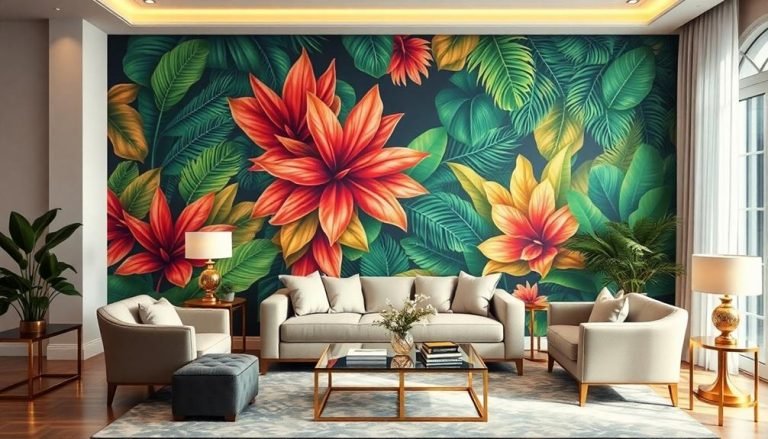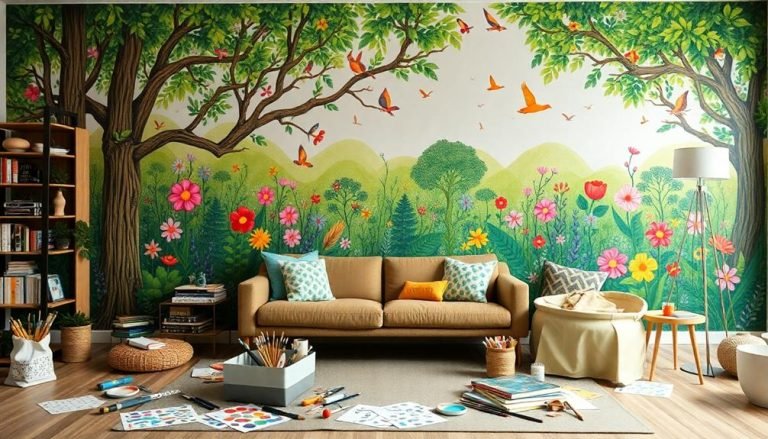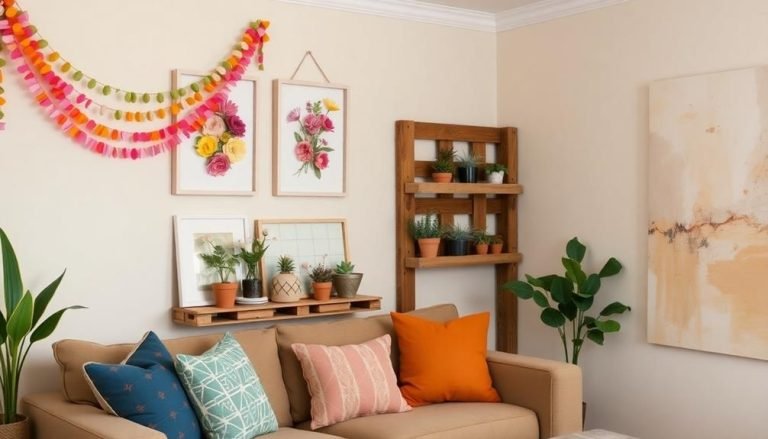Did you know that creating wall art from recycled materials can transform not only your space but also your perspective on waste? It's a unique way to express your creativity while contributing to a more sustainable lifestyle. As you explore the possibilities, you'll find that the materials you have at home can spark innovative ideas. Imagine the stories behind each piece you create and how they reflect your values. What if you could turn everyday items into something that not only beautifies your walls but also carries a deeper meaning?
Key Elements
- Recycled wall art promotes sustainability by reusing discarded materials, reducing waste, and minimizing environmental impact.
- Each piece of recycled art is unique, adding character and charm to your home décor.
- Creating art from recycled materials fosters creativity and encourages community engagement through shared projects.
- It offers a cost-effective alternative to traditional art, making creativity accessible to everyone.
- Incorporating natural elements in your art can enhance aesthetics and create a connection to nature.
Benefits of Recycled Wall Art
Recycled wall art offers numerous benefits that can enhance your space while promoting sustainability. By incorporating unique pieces crafted from discarded materials, you not only create a distinctive atmosphere in your home, but you also contribute to a more eco-friendly lifestyle, fostering a sense of belonging within a community that values creativity and environmental responsibility.
Utilizing thrift store finds can further enrich your decor by adding character and charm through vintage items. This form of art often sparks conversations, inviting guests to engage with your space on a deeper level, as they admire the stories behind each piece. Utilizing materials such as old newspapers, fabric scraps, or reclaimed wood allows you to express your individuality while reducing waste, which is increasingly relevant in today's world.
Additionally, recycled wall art can often be more affordable than traditional art, enabling you to curate a visually appealing environment without straining your budget.
Furthermore, the act of creating or selecting recycled art fosters a connection to the past, as each piece carries its own history. By surrounding yourself with these thoughtfully crafted items, you cultivate a warm and inviting atmosphere, where both you and your guests can feel a sense of community and shared values, ultimately enhancing the overall aesthetic of your home.
Easy DIY Ideas to Get Started
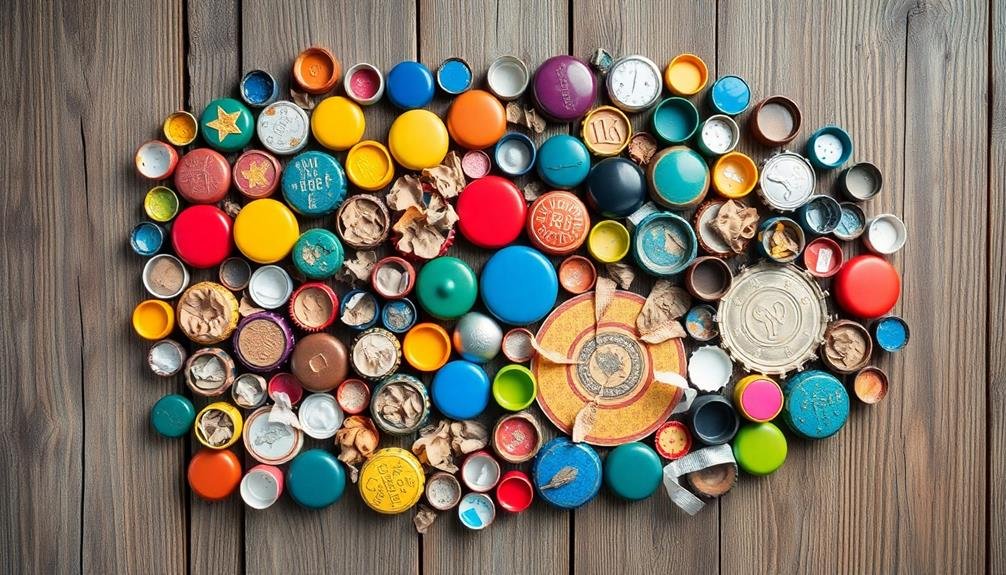
Your creativity can shine through with easy DIY wall art projects that utilize materials you already have at home.
These projects don't just allow you to express your artistic side; they also foster a sense of community as you share your creations with friends and family.
Engaging in these DIY decor projects provides personalized and budget-friendly options that enhance your living space.
Here are four simple ideas to get you started:
- Bottle Cap Mosaic: Gather colorful bottle caps and arrange them into a design or pattern on a canvas or wooden board. Secure them with glue for a vibrant, textured piece.
- Fabric Scrap Collage: Use leftover fabric scraps to create a stunning collage. Cut different shapes and sizes, then adhere them to a canvas, forming an abstract design that reflects your style.
- Paper Plate Art: Transform ordinary paper plates into whimsical designs with paint, markers, or decoupage using old magazines. Hang these cheerful pieces to brighten up a room.
- Old Frame Revamp: Take an unused picture frame and fill it with a fabric or paper background, then add items like dried flowers or leaves for a unique touch.
These projects not only enhance your space but also connect you to the joy of creativity.
Materials You Can Use
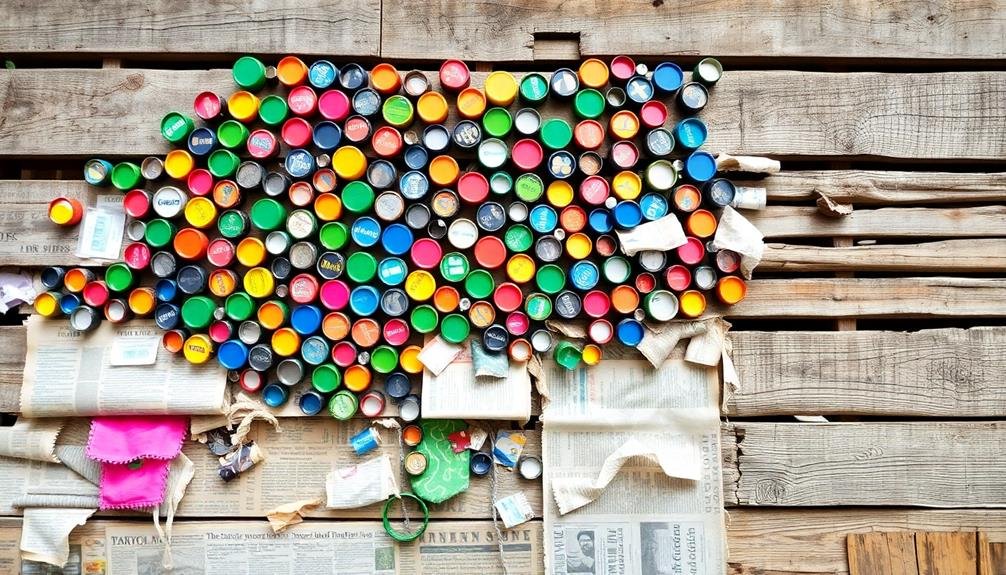
Creating wall art using recycled materials opens up a world of possibilities, as you can repurpose everyday items often found around the house. Start by exploring your kitchen; glass jars and old utensils, like forks and spoons, can be transformed into charming sculptures or functional art pieces.
Consider using cardboard boxes, which, when cut and painted, can create stunning three-dimensional wall hangings. You might also find inspiration in seasonal decor ideas, such as incorporating vibrant colors from textiles and color palettes to enhance your creations.
Don't overlook fabric scraps, either; remnants from old clothing or linens can be stitched together to form a colorful tapestry, adding texture and warmth to your space. If you have an abundance of magazines or newspapers, try tearing or cutting them into shapes to create a collage that tells a story or reflects personal themes.
Wooden pallets, often discarded, can serve as a rustic canvas for your creativity, allowing you to paint or attach other materials for a unique touch.
Lastly, think about natural elements, such as twigs, leaves, or stones, which can be integrated into your design for an organic aesthetic. By utilizing these readily available materials, you'll cultivate a sense of belonging while producing art that speaks to your identity and values.
Step-by-Step Creation Process
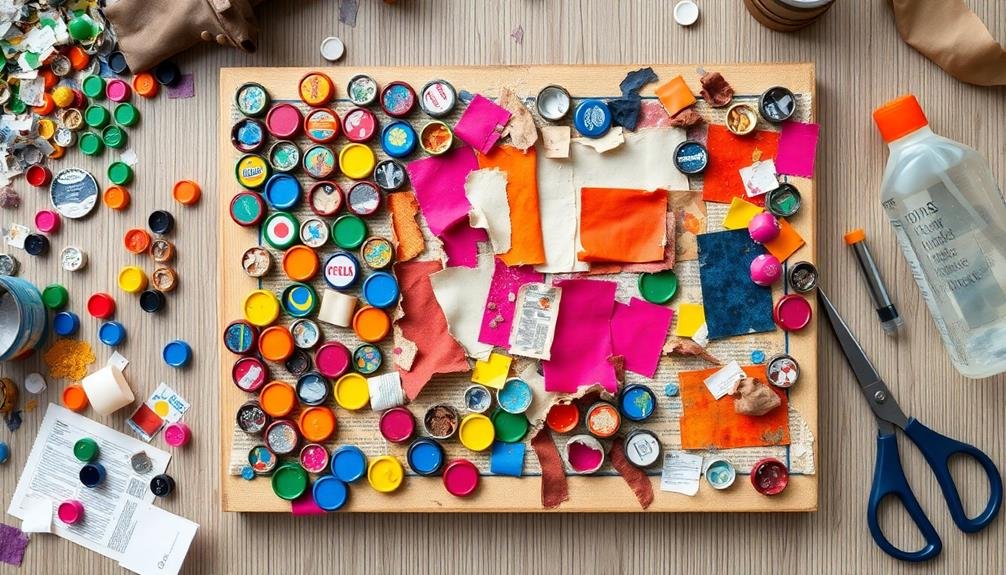
To start making your wall art, gather all the materials you've chosen and find a suitable workspace. A well-lit area with ample room will allow you to create freely without feeling cramped.
Once you're set up, follow these steps to bring your vision to life:
- Plan Your Design: Sketch a rough outline of your artwork on paper. This helps you visualize the arrangement of your materials.
- Prepare Your Materials: Clean and cut your recycled items, ensuring they're ready to be assembled. This step is vital for achieving a polished look.
- Assemble Your Artwork: Begin layering your materials according to your design. Use glue or other adhesives to secure them in place, ensuring stability and longevity.
- Add Finishing Touches: Once everything is glued down, consider adding embellishments like paint, glitter, or additional textures for depth and interest.
Showcasing Your Finished Artwork
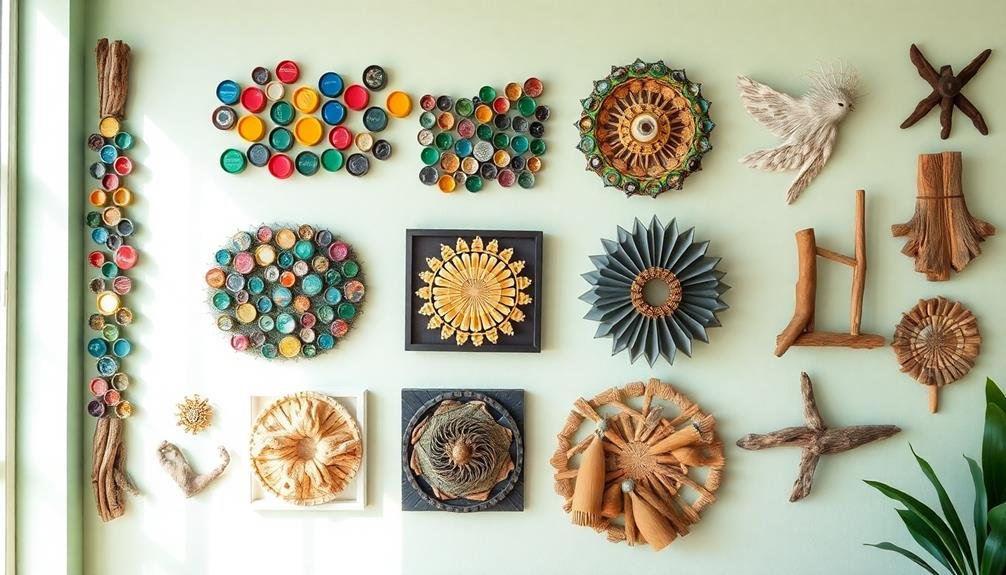
Showcasing your finished artwork can be just as exciting as the creation process itself. Once you've crafted your unique piece from recycled materials, consider how best to present it in your space. Placing your artwork in a well-lit area can enhance its visual appeal, drawing the eye and inviting discussion among friends and family.
Utilize wall hooks, frames, or even adhesive strips to securely mount your creation, ensuring it's displayed prominently.
To foster a sense of belonging and community, consider creating a designated gallery wall. This could feature a collection of your artworks alongside pieces from friends or local artists, creating a vibrant dialogue of creativity.
When arranging your work, think about color coordination, shapes, and sizes to create visual harmony.
Additionally, don't hesitate to share your artwork on social media platforms or local community boards, inviting feedback and encouraging others to engage with your artistic journey.
Frequently Asked Questions
Can Recycled Wall Art Be Sold for Profit?
Absolutely, you can sell recycled wall art for profit! By tapping into the growing eco-conscious market, you'll attract buyers who appreciate creativity and sustainability. Your unique pieces can truly resonate with those seeking authentic home decor.
How Do I Choose a Theme for My Artwork?
Think of choosing a theme like picking a favorite song; it resonates deeply. Reflect on what moves you—nature, emotions, or memories. Your passion will guide your creativity, making your artwork truly meaningful and relatable.
What Tools Do I Need for Creating Recycled Wall Art?
You'll need scissors, glue, paint, and an assortment of recycled materials like cardboard, fabric, or plastic. Gather a sturdy canvas or wood as your base, and don't forget your creative spirit to inspire your art!
How Can I Maintain My Recycled Wall Art?
Did you know that 75% of art enthusiasts appreciate eco-friendly creations? To maintain your recycled wall art, regularly dust it, avoid direct sunlight, and use gentle cleaners to preserve its unique charm and vibrant colors.
Are There Any Environmental Benefits Beyond Recycling?
You're not just recycling—you're reducing waste and conserving resources. By choosing eco-friendly materials, you're supporting sustainable practices and inspiring others to join you. Together, you're making a positive impact on the environment!
Whats Next
By embracing wall art crafted from recycled materials, you not only enhance your living space with unique aesthetic appeal, but you also contribute to a significant reduction in waste; in fact, the Environmental Protection Agency reports that recycling and composting prevented the release of approximately 186 million metric tons of carbon dioxide equivalent into the air in 2018 alone. Consequently, as you begin this creative journey, you're intertwining artistry with environmental stewardship, fostering a sustainable future for all.

